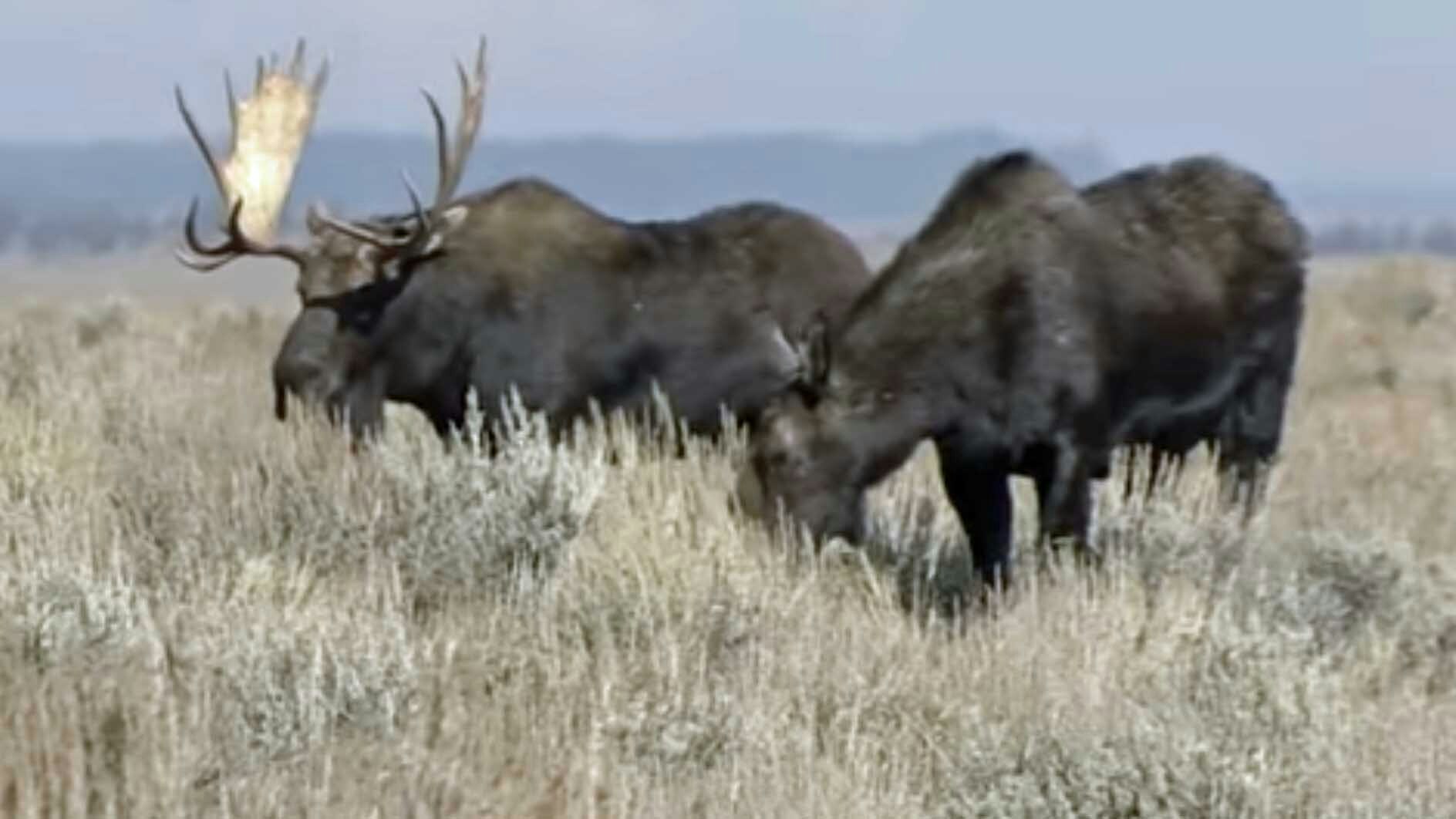Hundreds of people on Facebook were alarmed recently when a graphic shared widely on social media showed Wyoming’s moose population has been decimated in recent years, dropping from more than 10,000 animals in the mid-1990s to 1,500 by 2017.
Between 2011 and 2012 alone, the graph showed the population plummeting by more than 4,000 animals. Wyoming Sen. Ogden Driskill shared the image on his Facebook page, pointing toward the rising wolf population as the culprit for the decline, like many others did.
“At what point do the moose become endangered and we start killing wolves to save an endangered species????” Driskill wrote in January.
The graph is not entirely accurate, according to Wyoming Game and Fish Department officials.
“That graph had quite a few errors in it,” said Doug Brimeyer, the department’s deputy chief of wildlife, including the fact it showed a steep 2012 population drop that was actually the result of a change in the way the agency estimated moose numbers.
But the state’s moose population has declined significantly in recent years because of a mix of factors, Brimeyer said.
“I think it’s unfair to put it off on one single cause, because I think moose have faced the perfect storm of issues,” he said.
Currently, the statewide moose population is Wyoming is just under 3,500 animals, Brimeyer said. And the graph shared on social media isn’t all wrong — the population has been trending downward since hitting 10,000 in the mid-1990s.
“Overall, we’ve seen some significant declines over the last 25 years,” Brimeyer said. “Historically, it’s obviously a declining trend.”
Moose challenges
The “perfect storm of issues” that moose are facing is widespread. Officials in Idaho, Utah and Montana have reported similar population declines, a trend that’s raised concern since the early 2000s.
“They’re influenced by a whole variety of issues,” Brimeyer said.
Predation from wolves, grizzly bears and mountain lions plays a role.
“Wolves start showing up in the late ‘90s,” Brimeyer said. “Around the same time, grizzly bears start expanding their range. They’re all a piece of the puzzle. I don’t want to diminish the role that predation played, because it’s pretty significant.”
Brimeyer said wolf hunting seasons are successfully keeping the predators in check in Wyoming, which could prove beneficial to moose.
In addition to predation, moose are threatened by other environmental factors, from massive wildfires that destroy habitat to tiny parasites that can bring mighty moose down from the inside.
Brimeyer said warmer, drier weather in Wyoming in recent years has made it easier for parasites like winter ticks, which attach themselves to moose in the fall, to stay alive and feed on the moose.
“In dry falls, those animals tend to pick up a lot of (winter ticks), which can affect their ability to maintain their nutritional status,” Brimeyer said. “Some of these animals can carry a very high tick load.”
A 2018 study on New Hampshire moose found that animals with high ticks loads died of emaciation and malnutrition linked to the arachnids.
Wyoming moose have also been affected by a carotid artery worm, a parasite transmitted by horseflies that constricts blood flow and can lead to death. The parasite’s target host, deer, are often asymptomatic.
“The moose is the wrong host for this parasite, so they have symptoms where they start walking in circles and eventually die,” Brimeyer said.
Humans aren’t blameless in the decline, either. Brimeyer said the department has seen an uptick in vehicle collisions resulting in moose fatalities.
Saving the moose
The Wyoming Game and Fish Department has long been looking for ways to boost struggling moose numbers. Over the last 15 years, Brimeyer said, the agency has consistently decreased moose tag numbers and changed the structure of its hunting season to give the animals a better chance at recovery.
In the 1990s, Game and Fish changed regulations to ban hunters from harvesting cow moose with calves at their side. Around 2000, the agency eliminated cow moose hunts in some units.
“In the ‘90s, we were harvesting over 1,000 moose,” Brimeyer said. “In 2019, we harvested about 300 moose.”
The efforts could be paying off — although it is difficult to determine because moose are notoriously difficult to count. Despite their huge size, moose are elusive and largely solitary.
“Right now, there’s no feasible census techniques out there,” Brimeyer said, adding that Game and Fish Department is working on trail camera counts, as well as DNA sampling of hair and fecal pellets to try to identify animals.
Still, department counts show some potentially good news for moose. Calf ratios are improving in Western Wyoming, where officials counted more than 2,000 specimens in 2018.
“We’re optimistic that Wyoming’s moose populations are beginning to change a bit,” Brimeyer said.





